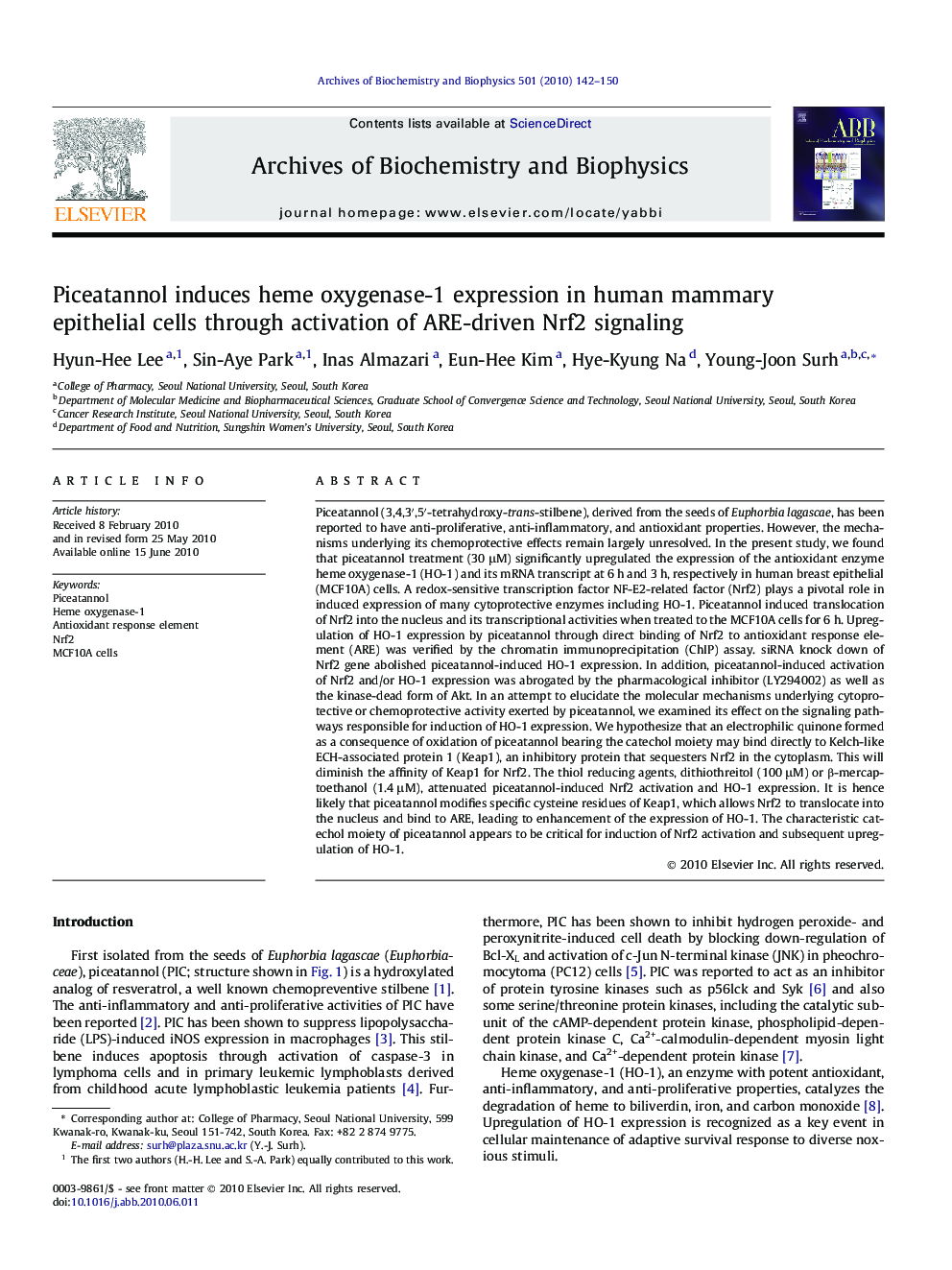| کد مقاله | کد نشریه | سال انتشار | مقاله انگلیسی | نسخه تمام متن |
|---|---|---|---|---|
| 1926009 | 1536430 | 2010 | 9 صفحه PDF | دانلود رایگان |

Piceatannol (3,4,3′,5′-tetrahydroxy-trans-stilbene), derived from the seeds of Euphorbia lagascae, has been reported to have anti-proliferative, anti-inflammatory, and antioxidant properties. However, the mechanisms underlying its chemoprotective effects remain largely unresolved. In the present study, we found that piceatannol treatment (30 μM) significantly upregulated the expression of the antioxidant enzyme heme oxygenase-1 (HO-1) and its mRNA transcript at 6 h and 3 h, respectively in human breast epithelial (MCF10A) cells. A redox-sensitive transcription factor NF-E2-related factor (Nrf2) plays a pivotal role in induced expression of many cytoprotective enzymes including HO-1. Piceatannol induced translocation of Nrf2 into the nucleus and its transcriptional activities when treated to the MCF10A cells for 6 h. Upregulation of HO-1 expression by piceatannol through direct binding of Nrf2 to antioxidant response element (ARE) was verified by the chromatin immunoprecipitation (ChIP) assay. siRNA knock down of Nrf2 gene abolished piceatannol-induced HO-1 expression. In addition, piceatannol-induced activation of Nrf2 and/or HO-1 expression was abrogated by the pharmacological inhibitor (LY294002) as well as the kinase-dead form of Akt. In an attempt to elucidate the molecular mechanisms underlying cytoprotective or chemoprotective activity exerted by piceatannol, we examined its effect on the signaling pathways responsible for induction of HO-1 expression. We hypothesize that an electrophilic quinone formed as a consequence of oxidation of piceatannol bearing the catechol moiety may bind directly to Kelch-like ECH-associated protein 1 (Keap1), an inhibitory protein that sequesters Nrf2 in the cytoplasm. This will diminish the affinity of Keap1 for Nrf2. The thiol reducing agents, dithiothreitol (100 μM) or β-mercaptoethanol (1.4 μM), attenuated piceatannol-induced Nrf2 activation and HO-1 expression. It is hence likely that piceatannol modifies specific cysteine residues of Keap1, which allows Nrf2 to translocate into the nucleus and bind to ARE, leading to enhancement of the expression of HO-1. The characteristic catechol moiety of piceatannol appears to be critical for induction of Nrf2 activation and subsequent upregulation of HO-1.
Journal: Archives of Biochemistry and Biophysics - Volume 501, Issue 1, 1 September 2010, Pages 142–150